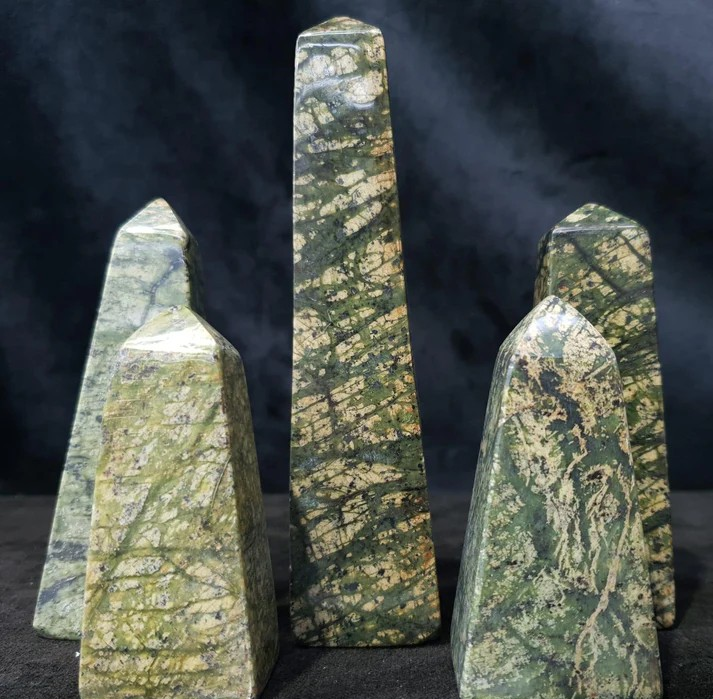Serpentine is not a single mineral but rather a group of related minerals, primarily composed of magnesium silicate hydroxide. This group includes several polymorphs, which are minerals with the same chemical composition but different crystal structures. The most common polymorphs of serpentine are antigorite, chrysotile, and lizardite. Each of these minerals has unique properties and forms, contributing to the diversity of the serpentine group.
Serpentine minerals typically form through the hydrothermal alteration of ultramafic rocks, such as peridotite and dunite. Ultramafic rocks are igneous rocks with very low silica content and are rich in minerals like olivine and pyroxene. This process occurs when these rocks are exposed to water and heat, often at tectonic plate boundaries or in regions with significant geothermal activity, such as Iceland. The presence of hydrothermal fluids, which are hot, mineral-rich solutions originating from the Earth's crust, facilitates the chemical reactions that transform the original minerals into serpentine.
Countries that produce the most serpentine include the United States, Canada, and New Zealand. Among these, New Zealand is known for producing some of the highest quality serpentine, particularly in the form of gem-quality varieties like bowenite and williamsite. Bowenite is a variety of antigorite, known for its attractive green to blue-green colour, it is often referred to as "New Jade" due to its resemblance to jade, although it is softer. Williamsite is another variety of antigorite, typically more translucent than bowenite and often displaying a rich green colour.
Physical Properties
Serpentine minerals are known for their green colour, which can range from light to dark shades, but they can also appear in other colours such as white, yellow, black, and red. They have a greasy or waxy lustre and a slippery feel, reminiscent of a snake's skin. The name "serpentine" is derived from the Latin word "serpens," meaning snake, because of its snake-like appearance and texture. The hardness of serpentine varies between 2.5 and 6 on the Mohs scale, and it typically has a white streak. These minerals are usually translucent to opaque and can exhibit a fibrous or platy crystal habit.
Chemical Composition
The general chemical formula for serpentine minerals is (Mg,Fe,Ni,Al,Zn,Mn)₂₋₃(Si,Al,Fe)₂O₅(OH)₄. This formula indicates that the composition can include magnesium, iron, nickel, aluminium, zinc, and manganese, with silicon, aluminium, or iron substituting for some of the silicon atoms. The presence of these elements contributes to the variety of colours observed in serpentine.
Uses and Applications
Serpentine minerals have several practical applications. Chrysotile, a fibrous form of serpentine, has been used as asbestos in various industrial applications, although its use has declined due to health concerns. Serpentine is also used as an ornamental stone and in architectural applications due to its attractive appearance and ability to take a high polish. Additionally, serpentine is sometimes used in gemstone carving and as a source of magnesium.
In metaphysical practices, serpentine is believed to have powerful healing properties. It is thought to assist in the retrieval of ancient wisdom, enhance meditation, and promote emotional healing. Some also believe that serpentine can help clear blocked energy pathways and detoxify the body.
Conclusion
Serpentine is a fascinating group of minerals with diverse properties and significant geological and industrial importance. Its formation through hydrothermal processes and its wide range of applications make it a subject of interest for geologists, mineralogists, and industrial professionals alike.
References
- minerals.net
- britannica.com
- geologyscience.com
- thecrystalcouncil.com

